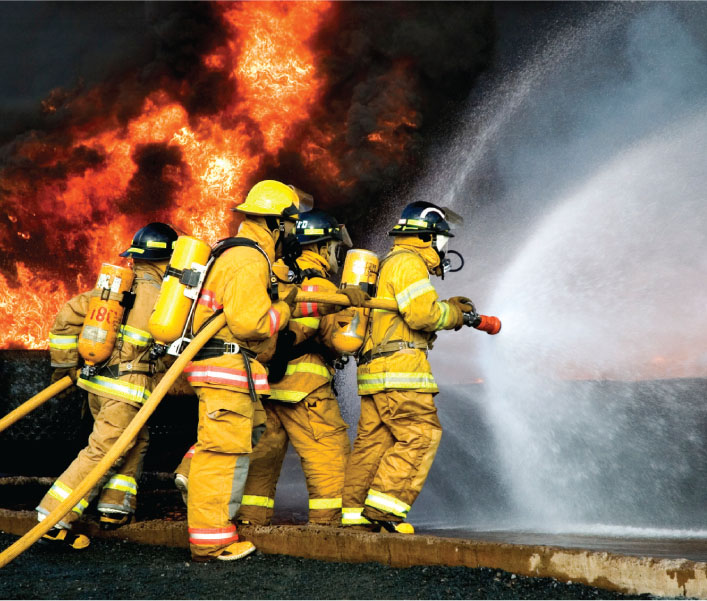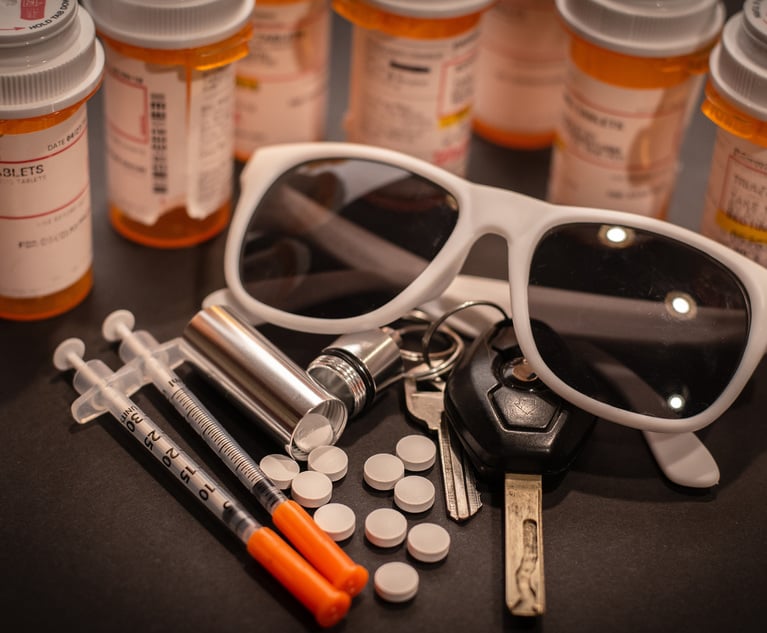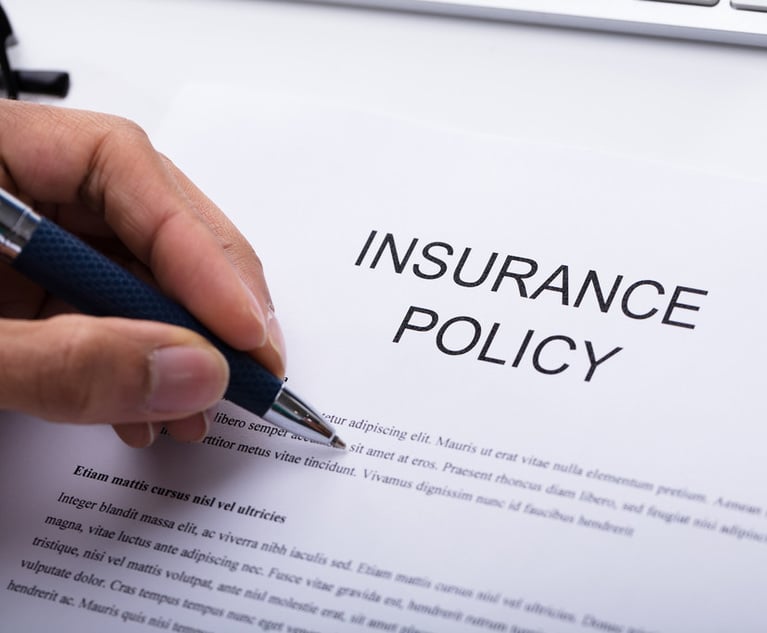As risk managers implement property-protection plans inpreparation for an above-average hurricane season—that follows hardon one of the most active tornado seasons in U.S. history—it is nosurprise that the seemingly more mundane threat of fire has beenput on the back burner.
| Yet while risk managers' focushas rested, rightfully so, on the immediate threats presented by anoveractive weather pattern, fire remains one of the most-costlycommercial-property loss drivers.
Yet while risk managers' focushas rested, rightfully so, on the immediate threats presented by anoveractive weather pattern, fire remains one of the most-costlycommercial-property loss drivers.
Although the incidence of fire has shown a steady decrease overthe last 30 years, the average cost-of-fire loss has increased,according to the National Fire Protection Association (NFPA).Agents, brokers and insurers can help risk managers keep firesafety a top priority throughout the year by identifying thoseareas most vulnerable to fire loss and helping risk managersmaintain an active fire-prevention strategy.
|A good first step in addressing vulnerable areas is to identifythe locations and causes of fire that inflict the greatest amountof property damage. According to the NFPA, some of the most commonpoints of origin for fire in commercial occupanciesare:
- Attic spaces and roof assemblies, which account for only 3percent of fires in office occupancies but result in adisproportionate 15 percent of direct property damage.
- Flammable liquids in industrial and manufacturing occupancies,which account for 10 percent of fires and 12 percent of directproperty damage.
- Electric wire and cable insulation, which contribute to 6percent of fires and 7 percent of direct property damage inindustrial and manufacturing occupancies.
FIRST STEP: SPRINKLER CHECK
|Once a problem area is identified, what are the next steps?First, risk managers should conduct an evaluation of theirproperty's sprinkler systems. NFPA research shows that the averageloss per fire was 60 percent lower in office occupancies when anautomatic-suppression system was present.
|However, suppression systems are not one-size-fits-all, and thesystem must be appropriate for the occupancy being protected. Someof the key questions to ask during the sprinkler evaluationinclude:
- Are all areas of the building protected properly, and is thatprotection properly maintained?
- Are combustible concealed spaces, such as those above aceiling, protected by a sprinkler system? If not, perhaps theexisting system can be extended into this area or a new system canbe installed to provide such protection.
- If there is an existing system, has it been serviced recentlyto verify that it is functioning? It is a well-known fact that aproperly maintained sprinkler system is highly effective incontaining or even extinguishing a fire.
- Has the configuration of the area, or the material being storedthere, recently changed; and, if so, does the current sprinklersystem provide the same level of protection?
One of the most important aspects of any fire-protection programis to ensure that any installed sprinkler system is properlyinspected, tested and maintained. According to the NFPA, three ofthe top causes of sprinkler-system failures are: 1) system shutoff; 2) inadequate maintenance; and 3) obstruction to distribution.For locations where there is a properly trained maintenance staff,system-maintenance costs can be kept to a minimum by completingsome inspection and testing activities in-house.
|One activity that can help prevent the most common cause ofsprinkler-system failure—a shut water-supply valve—is inspection ofthe fire-protection control valves to ensure they are open.Fire-protection valves must be “indicating,” meaning that they mustoffer some visual indication of their open or shut status. Monthlyinspection of these system-control valves to ensure the valves areopen does not take a lot of time and is the best way to guarantee abuilding's sprinkler system will work when needed.
|By simply standing on the facility floor and looking up, theentire sprinkler system can be easily inspected for any potentialobstructions to sprinkler discharge by looking at the sprinklersand making sure that there is at least 18 inches of clear spacebelow them. Providing 18 inches of clear space below the sprinklerwill ensure that an adequate water-spray pattern develops.
|Two additional preventative measures that can be completed byin-house maintenance staff are the semi-annual alarm and annualdrain testing. The alarm test is completed by opening a testconnection causing water to flow past the waterflow switch. Thesystem should go into an alarm condition within 90 seconds. If itdoes not, the switch can be adjusted; or if no alarm is received atall, the system should be inspected thoroughly to determine why itmalfunctioned.
|The drain test is a simple evaluation of thewater-supply-control valves:
- Record the static or non-flowing pressure from the rmanentlyattached pressure gauge.
- J Then, open the two-inch drain valve to discharge the waterand record the residual or flowing-pressure.
- Next, close the drain valve and note how much time it takes forthe pressure to return to the static level previouslyrecorded.
- Finally, compare pressures to previous test results todetermine if there is deterioration in the watersupply.
If it takes a long time for the pressure to return to normal,this could be an indication of a partially closedwater-supply-control valve. For more sophisticated testing andmaintenance such as testing dry pipe systems or fire pumps,companies should hire a licensed contractor.
|PROPER STORAGE, MAINTENANCE
|Closely tied to regular inspection and testing of thesuppression systems is the proper storage and maintenance ofmaterials. The amount and type of flammable and combustible liquidspresent varies depending on a company's occupancy andoperations—but be assured that the majority of companies haveexposure to this risk.
| These chemicals present asignificant exposure to loss since they ignite easily, burnintensely and result in fires that can be difficult to control andextinguish and can quickly overwhelm a fire-suppression system. Animportant step in avoiding catastrophic loss involving theseliquids is to prevent ignition and fire by using appropriateequipment and handling procedures.
These chemicals present asignificant exposure to loss since they ignite easily, burnintensely and result in fires that can be difficult to control andextinguish and can quickly overwhelm a fire-suppression system. Animportant step in avoiding catastrophic loss involving theseliquids is to prevent ignition and fire by using appropriateequipment and handling procedures.
The first level of protection for a flammable liquid is to usean approved safety container. These containers are made of ruggedmaterials, have self-closing lids and are designed to limit spillswith leak-proof covers and limit ignition by means of flamearresters in the pour spout. The next level of protection is tolimit the amount of liquids in the point-of-use area by onlypermitting the quantity needed for each activity.
|These liquids, even in small quantities, can significantlyincrease the hazard of an otherwise properly protected area. It isimportant that this hazard be recognized and properly controlled.If more than four or five one-gallon or larger containers, or 12 ormore smaller containers are needed, a storage cabinet should beused to safely store these liquids. The cabinet should bespecifically designed to limit vapor production and should beproperly grounded to prevent static electricity from ignitingvapors.
|With all the focus on weather-related losses, it's easy toforget that fire is still a major risk. But by focusing attentionon the major causes of fire and developing a basic strategy toaddress the root cause of fire in their clients' facilities,agents, brokers and insurers can help risk managers establish afire-prevention program that will help reduce the incidence offire.
|A simple and straight-forward inspection, testing andmaintenance program for sprinkler systems in each facility willensure proper operation of the system and increase the likelihoodthat the system will function as intended in the event of a fire.Even as hurricane season gets into full swing, don't forgetfire!
Want to continue reading?
Become a Free PropertyCasualty360 Digital Reader
Your access to unlimited PropertyCasualty360 content isn’t changing.
Once you are an ALM digital member, you’ll receive:
- All PropertyCasualty360.com news coverage, best practices, and in-depth analysis.
- Educational webcasts, resources from industry leaders, and informative newsletters.
- Other award-winning websites including BenefitsPRO.com and ThinkAdvisor.com.
Already have an account? Sign In
© 2024 ALM Global, LLC, All Rights Reserved. Request academic re-use from www.copyright.com. All other uses, submit a request to [email protected]. For more information visit Asset & Logo Licensing.








